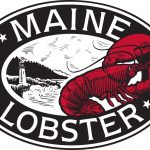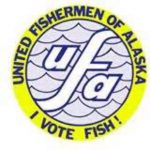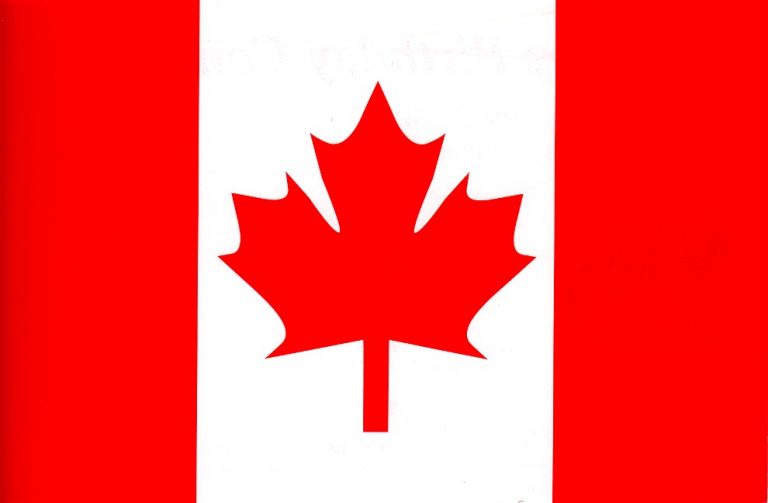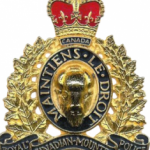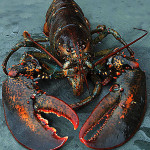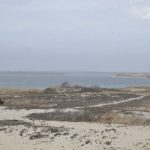Update on Results and Progress of DMF Gulf of Maine Cod Industry-Based Survey & SMAST Video Trawl Survey
October 31, 2019
MarineFisheries Advisory
Update on Results and Progress of
DMF Gulf of Maine Cod Industry-Based Survey &
SMAST Video Trawl Survey
The Gulf of Maine (GOM) Cod Industry-Based Survey (IBS) has concluded three years of surveying, and the SMAST Pilot Video Trawl Survey of GOM cod on Stellwagen Bank has preliminary results. Some findings and implications of the combined results are presented here. Further analyses are underway and are described below as is discussion on the discard dilemma that continues to face the commercial industry while operating under extremely low catch limits for GOM cod.
Recreational Fishery Guidance
IBS data are now being used to provide guidance for the recreational fishery about where to catch haddock and avoid cod. Recreational fishery discard mortality is currently the largest source of removals for GOM cod. The IBS has identified several areas where legal-sized haddock are abundant but cod are not.
DMF currently is developing and validating spatial models of expected recreational haddock and cod catch rates. Waterproof “haddock fishing guide” map books (and a location-aware Smartphone app) will be freely distributed this winter in time for the 2020 fishery, all due to IBS work and the creativity of DMF staff.
Spring and Winter Spawners
DMF staff has determined from the IBS survey the relative importance of cod spring-spawners (April-July) and winter-spawners (October-January). Our first priority was to re-evaluate our current understanding of cod stock structure for use in Northeast Fisheries Science Center GOM cod stock assessments. A surprising finding was federal and state waters’ closed areas favor spring-spawners, but the fishery primarily harvests winter-spawners not having similar protection. Yet despite spring-spawner protection, cod recruitment has been very poor in recent years.
The population is comprised predominately of winter-spawners not protected by closures. This important revelation has yet to influence federal stock assessment scientists and the New England Fishery Management Council because these findings are new and IBS based. DMF will highlight this discovery at the federal management and science levels.
Recruitment
Of possible significance, the final year of the GOM Cod IBS revealed a not-seen-before spike in one-year old cod. Additionally, DMF’s Resource Assessment Project bottom trawl survey saw an increase in young-of-the-year cod this past spring. Consequently, although cod biomass is still low, we have had some recruitment success giving us hope for stock rebuilding and increased spawning stock biomass, but not until 2023 at the earliest.
It will take a few years before these one-year old fish are of commercial or recreational fishery size, and we must wait to determine survival of this year-class. Nevertheless, this is encouraging news. It’s a forecast to be evaluated by state and federal scientists charged with assessing this stock and recommending catch limits based on target fishing mortalities and catch. DMF staff will be very involved in those discussions as will University of Massachusetts at Dartmouth’s School of Marine Science and Technology (SMAST) – i.e., a Massachusetts Marine Fisheries Institute (MFI) task.
IBS Experiments
IBS data are to be adjusted by IBS net-efficiency and herding experiments completed this past June. Accounting for cod, and other species, escaping under the net’s footrope and being herded in front of the net during trawl tows will be relevant for upcoming benchmark stock assessments (spring of 2023, if not sooner). DMF’s own calculations of cod biomass will be compared with SMAST Video Trawl Pilot Survey data to the extent possible.
Work still to be completed is:
(1) a comparison of IBS1 (2003-2007) to IBS2 (2016-2019) survey results to answer the question: Has the cod stock gone up or down and by how much?
(2) a comparison of DMF findings to fishermen’s observations: Do IBS data contradict or corroborate a 2017 phone survey of GOM commercial fishermen?
(3) an explanation(s) for discrepancies between IBS results, commercial fishery catches/observations, and federal GOM cod assessments.
Video Trawl Pilot Survey
SMAST researchers are still working to develop and improve their stereo-camera system which will allow measurements of fish length (thus converting length to weight and allowing for biomass to be calculated on open tows). The stereo camera is still being pilot-tested; therefore, SMAST for now only gets cod counts (and not size structure) from tows where the cod end is open. Currently, all tows provide estimates of area-swept abundance and area-swept biomass but only by applying a cod length-weight relationship determined from fish brought on deck (closed tows). Improvements are being made to the video system eventually to determine lengths (then to calculate weights) of fish in all open tows.
The winter 2019 survey of Stellwagen Bank took place from January 4th to the 11th on the F/V Justice out of New Bedford, MA. The survey team consisted of a captain, three crew members, and four SMAST scientists. Thirty survey tows (5 closed, 25 open) were completed during daylight hours.
Most survey tows were completed along the northwestern portion of the bank, and remaining tows were conducted on the central and southern part of the bank. Jeffreys Ledge also was surveyed; seven tows were conducted.
Prior to the first survey trip in 2016, SMAST selected its study area based on the distribution of cod observed during the DMF IBS and recent NOAA cooperative trawl survey station locations. SMAST surveyed regions of Stellwagen Bank where Atlantic cod are known to be relatively abundant. The survey encompassed areas commonly fished by the groundfish fleets.
Preliminary DMF Results
Cod IBS-biomass compared between years (timeline to 2017) depends on herding efficiency and escapement under the trawl net. Assuming “no herding” revealed a spawning stock biomass (SSB) of about 9,100 metric tons in 2017. At the other extreme of 100% herding efficiency, SSB was about 2,700 mt (same as federal assessment of biomass). The answer likely was in between. GOM cod is considered “overfished” when SSB drops below about 20,000 mt, or as high as 30,000 mt depending upon the model used to calculate the biomass target (below 1/2 target = overfished).
Escapement under the net wasn’t addressed in 2017 prior to DMF’s recent experiment. The federal survey also didn’t address that escapement. Consequently, the importance of determining the herding effect and escapement are obvious, and those DMF determinations are expected this year or early 2020.
Regardless of the amount of herding (assume 50%) or escapement (not-yet-determined), a comparison of IBS1 with IBS2 reveals a substantial decrease in SSB. From 2003-2007 highest SSB was about 20,000 mt. From 2016-2019 SSB was about 5,000 mt now compared to 20,000 mt (30,000 mt) defining overfished.
SMAST Pilot Study Results
SMAST results do not support a cod biomass reminiscent of earlier years such as those seeming to occur during the first GOM IBS survey. What was found on Stellwagen Bank obviously does not represent the entire western GOM, but it is indicative of the severity of low SSB.
found on Stellwagen Bank obviously does not represent the entire western GOM, but it is indicative of the severity of low SSB.
Biomass (determined from closed tows’ cod length-weight relationship) and density estimates were calculated from video analysis (using stereoscopic cameras) of open and closed tows. SMAST has developed an algorithm (computer program) to accurately and quickly video-count all cod and haddock entering the net cod-end. Researchers’ observations of video are no longer necessary.
SMAST used door-spread and a stratified survey approach applied to Stellwagen Bank. The above table confirms the large drop in biomass – even from 2016 and 2017. Most recent years revealed a 10-fold drop to 2018 and another 10-fold drop to extremely low biomass (just 3-8 mt) on Stellwagen Bank covering about 550-600 square km (212-232 square miles).
According to SMAST researchers, there was no evidence that cod may have moved off the Bank in 2019 during the survey period, a suggestion made by some fishermen to explain the lack of fish. SMAST hopes to eventually tag cod in the area to investigate the whereabouts of cod that may have moved off the Bank – perhaps to Jeffery’s Ledge east and north of Gloucester. Additionally, researchers plan to survey earlier and in November this year to better address cod possible movement off the Bank.
Ongoing Discard Dilemma
The 2009 assessment update and a peer review have confirmed that GOM cod is still overfished. It’s less than 10% of the New England Fishery Management Councils target set for needed abundance (SSB). Overfishing is occurring.
Furthermore, there are no positive signs of incoming recruitment to the fishery. DMF and SMAST will need to clarify that conclusion because our last surveys showed some positive signs although whatever recruitment we have seen likely will only contribute to legal-sized catch beginning in 2023. However, even if our positive sign proves to be correct, the stock is not on target to rebuild by the Council’s 2024 deadline even if fishing mortality now and in coming years is set at zero. Stock condition is poor as concluded by assessment scientists and then peer reviewers. Our Cod IBS and the SMAST Video Trawl Survey results are consistent with this assessment update.
Catch advice for fishing years 2020-2022 by the Council’s Science and Statistical Committee (SSC) is going to continue to constrain the fishery from targeting healthier stocks such as abundant haddock. The SSC will account for the fact that the cod stock is not on schedule to meet the rebuilding target.
Some have raised questions about the update. For example, State Senator Tarr was quoted in the State House News Service: “Fishing rules don’t match industry realities.” He said, “I’m still reading through the details but I think it points to the fact that we should be doing things differently than we are today…there’s too much regulatory discard of cod and there’s mortality that’s being caused by a set of rules that don’t recognize the practical reality of groundfishing…”.
Senator Tarr highlighted a problem unavoidably caused by federal rules, i.e., while fishing for abundant haddock especially in areas and at times where and when cod are aggregated, too much cod can be caught and then needs to be discarded when the catch exceeds fishermen’s cod allocations. This mixed-catch problem is unavoidable when fishermen target areas to catch abundant haddock (or other stocks) but cod happen to be in the areas. This problem has plagued fishermen and regulators for years, and it will continue with low cod quotas needed for stock rebuilding.
An important consideration about commercial discards is that with the NEFMC catch-share system (groundfish sectors) fishermen are prohibited from discarding legal-sized cod. If fishermen exceed their vessels’ cod allocations while on a fishing trip, they must purchase (lease) additional quota from other fishermen to cover the amount of their overage. However, often the lease price exceeds the ex-vessel price. Therefore, if fishermen cannot purchase additional quota, they cannot resume fishing in the Gulf of Maine until the next fishing year begins (May 1). Previous year overages are deducted from their allocations.
Many fishermen, therefore, have a conundrum. If they catch too much legal-sized cod (above their allocations) while they pursue haddock and other groundfish, such as flounders, and if they cannot lease cod from other fishermen (too costly or unavailable), what’s their option? Unmonitored fishermen while at-sea likely will discard, With eventual Council-planned effective at-sea monitoring through multiple video cameras, fishermen will be forced to land illegal catch only made legal after they balance their allocation “books” through costly quota leasing, if they can.
Early next year the Council will receive a contracted-report on groundfish catch-share management. It remains to be seen how that report will describe fishermen’s discard dilemma.



































